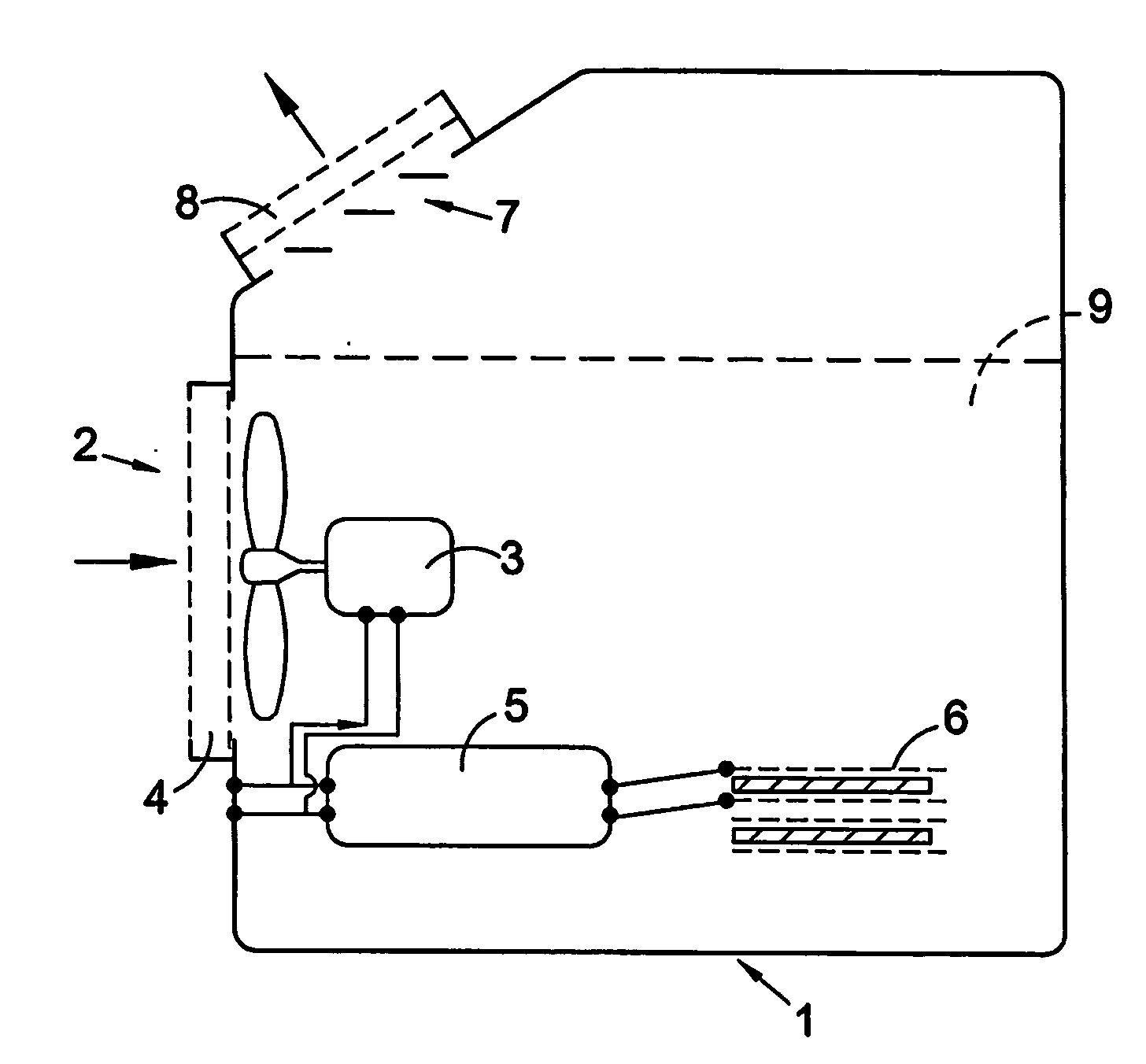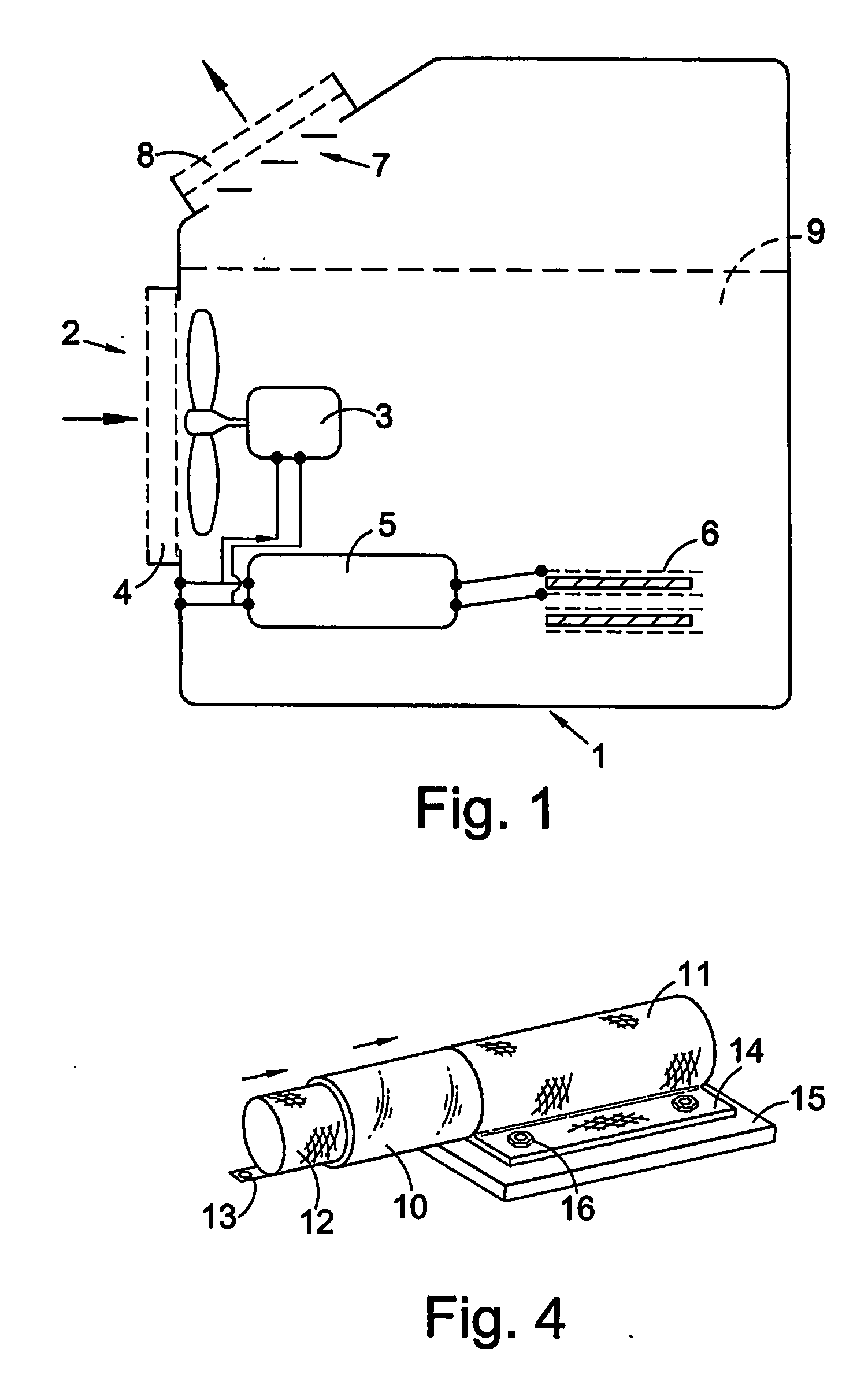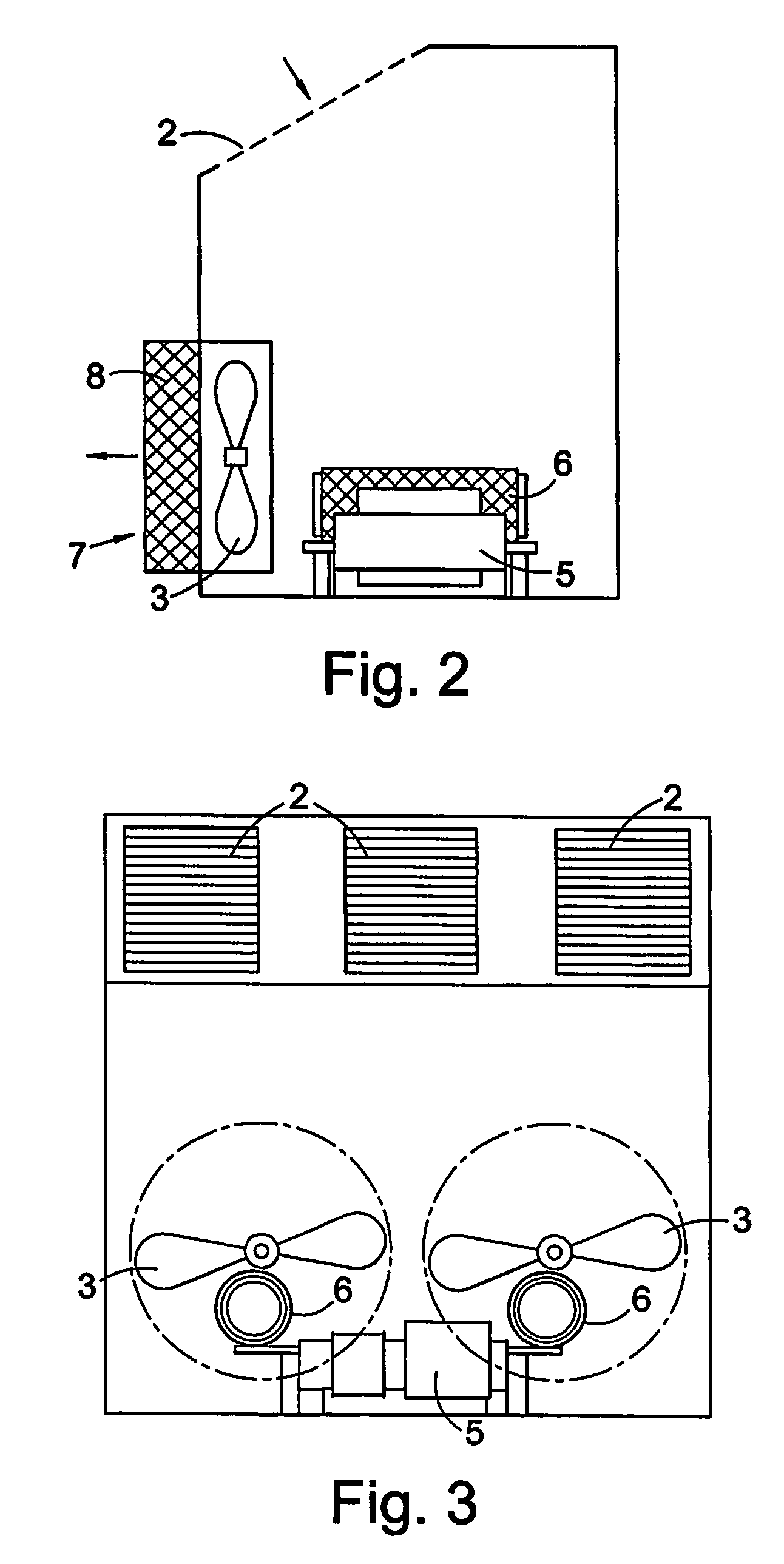Air cleaning device
a technology for cleaning devices and air, applied in chemical/physical/physical-chemical processes, electrostatic separation, chemical/physical processes, etc., can solve the problems of filtering being incapable of removing small viral particles, high concentrations of ozone, and hazard
- Summary
- Abstract
- Description
- Claims
- Application Information
AI Technical Summary
Benefits of technology
Problems solved by technology
Method used
Image
Examples
example 1
Apparatus for the Removal of Micro-Organisms from Air
Construction
[0053] With reference to FIG. 1, the apparatus comprises a containment means consisting of a casing (1), in this case of thin sheet metal construction. This casing has an inlet (2) fitted with an electrically-driven fan (3) so positioned as to produce an efficient flow of air into the apparatus. The inlet may, optionally, have a pre-filter (4) fitted. Within the casing is an approximately 4W corona discharge unit (6) operating at approximately 4 kV and lmA. A transformer (5) supplies power to the corona discharge unit. In this case the outlet (7) is fitted with an electrostatic post-filter (8, HAF, Filtrete™ 3M Corporation)
[0054] The details of the construction of the corona discharge unit are shown in FIG. 4. A silica glass tube dielectric (10) with a wall thickness of 0.8-1.1 mm has outer (11) and inner (12) essentially tubular stainless steel gauze electrodes. The dimensions are not critical but in this case th...
example 2
Anti-Aicrobial Performance of an M4 / 4 Device
[0057] The invention has been developed into a range of devices designed for microbiological decontamination of atmospheres. This embodiment employs closed-coupled field technology for the contained generation of an oxidising field, in tandem with electrostatic filtration of the air stream. Combining these technologies in a manner that affords a high flow-rate permits the effective treatment of large volumes of atmosphere.
M4 / 4 Device
[0058] This embodiment of the invention comprises four fans connected and switched so as to be progressively activated in order to provide a range of airflow rates: [0059] Speed 1=160 m3 / hour Speed 2=320 m3 / hour [0060] Speed 3=480 m3 / hour Speed 4=540 m3 / hour
[0061] Two modes of filtration were used in various experiments. Either a HEPA filter or an HAF (3M Filtrete™) post-filter were fitted and their relative effects compared.
Ozone Production Characteristics
[0062] The European standard for atmospheric l...
example 3
Single Pass Anti-Microbial Competence of M4 / 4 Device
[0070] The following experimental data reports on the performance of the device in relation to the reduction of single pass microbial challenges. Performance at each of four flow rates has been determined for a range of organisms with and without electrostatic filtration in place.
TABLE 4M4 / 4 single pass performance with electrostatic filtrationChallengeSpeed 1Speed 2Speed 3Speed 4levelRecoveryRecoveryRecoveryRecoveryOrganismcfu / l −1cfu / l − 1cfu / l − 1cfu / l − 1cfu / l − 1A. niger8.80E+06S.7.40E+06C. albicans6.00E+06S. aureus7.10E+06B. cereus2.20E+061.30E+02
[0071]
TABLE 5M4 / 4 Single performance with no electrostatic filtrationChallengeSpeed 1Speed 2Speed 3Speed 4levelRecoveryRecoveryRecoveryRecoveryOrganismcfu / l −1cfu / l − 1cfu / l − 1cfu / l − 1cfu / l − 1A. niger7.00E+06S.8.40E+06C. albicans8.30E+06S. aureus9.20E+06B. cereus4.70E+063.10E+029.80E+02
Speed 1 = 160 m3 / hour
Speed 2 = 320 m3 / hour
Speed 3 = 480 m3 / hour
Speed 4 = 540 m3 / hour
Con...
PUM
| Property | Measurement | Unit |
|---|---|---|
| Power | aaaaa | aaaaa |
| Flow rate | aaaaa | aaaaa |
| Current | aaaaa | aaaaa |
Abstract
Description
Claims
Application Information
 Login to View More
Login to View More - R&D
- Intellectual Property
- Life Sciences
- Materials
- Tech Scout
- Unparalleled Data Quality
- Higher Quality Content
- 60% Fewer Hallucinations
Browse by: Latest US Patents, China's latest patents, Technical Efficacy Thesaurus, Application Domain, Technology Topic, Popular Technical Reports.
© 2025 PatSnap. All rights reserved.Legal|Privacy policy|Modern Slavery Act Transparency Statement|Sitemap|About US| Contact US: help@patsnap.com



